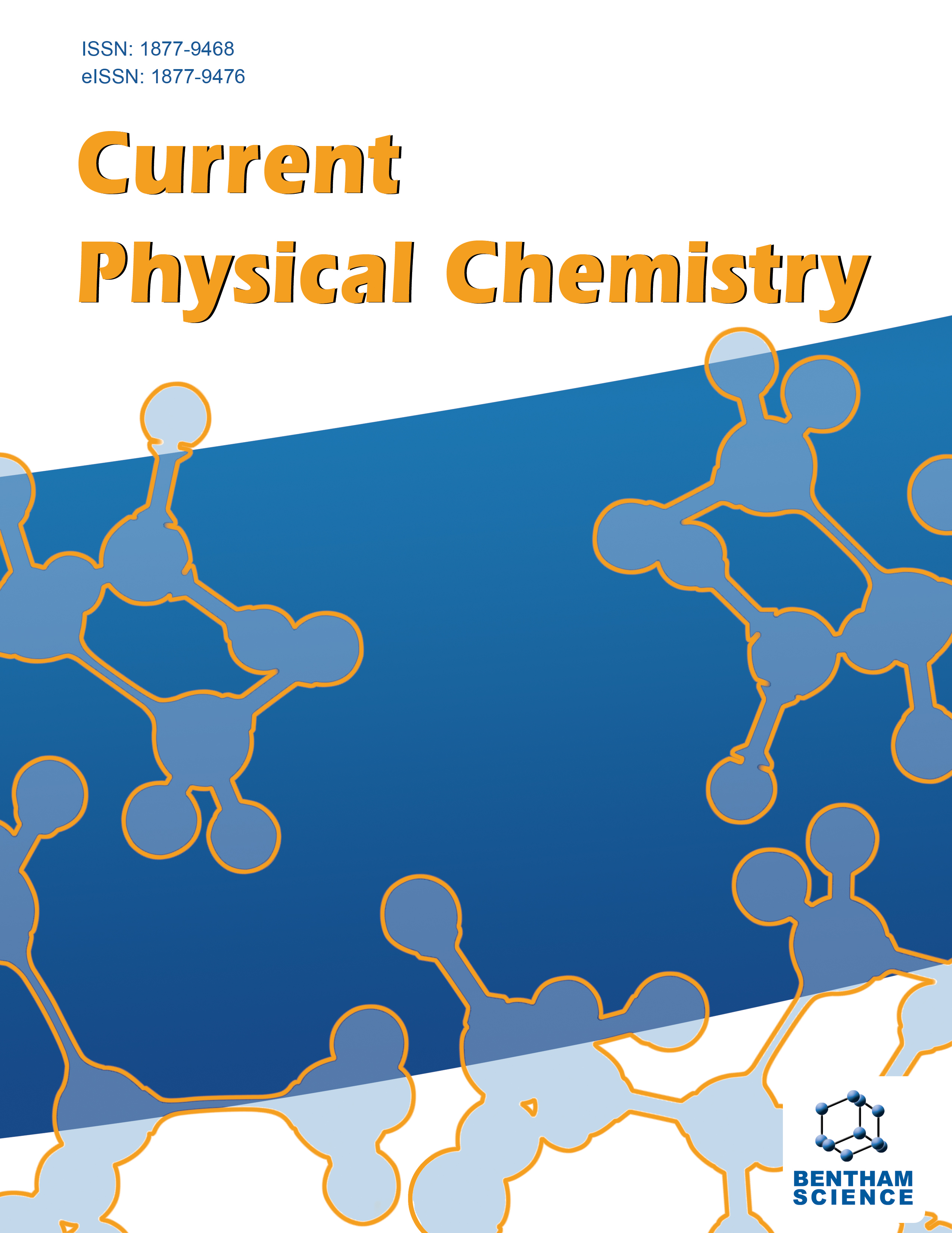- Home
- A-Z Publications
- Current Physical Chemistry
- Previous Issues
- Volume 4, Issue 3, 2014
Current Physical Chemistry - Volume 4, Issue 3, 2014
Volume 4, Issue 3, 2014
-
-
An Impedance Study about the Effect of pH on the Electron Transport Rate at Poly(o-aminophenol) Film Electrodes
More LessImpedance measurements on poly(o-aminophenol) (POAP) film electrodes in solutions of different pH were carried out. Impedance spectra were interpreted in terms of the modified electron hopping model described in F.J. Rodríguez Nieto, R. Tucceri, J. Electroanal. Chem., 416(1996), 1. An increase of the metal/POAP interfacial resistance with an increase of pH was obtained. With regard to the bulk charge-transport process Read More
-
-
-
Electrode Performance of Sulfur-Doped Vanadium Pentoxide Gel Prepared by Microwave Irradiation for Rechargeable Magnesium Batteries
More LessAuthors: Masashi Inamoto, Hideki Kurihara and Tatsuhiko YajimaRechargeable magnesium batteries have attracted attention for use in the nextgeneration power storage applications. V2O5 xerogel, which has a high capacity, is expected to be an active cathode material for magnesium rechargeable batteries. However, it faces the problem of degradation due to desorption of structural water. A vanadium pentoxide xerogel containing sulfur (S-V2O5 gel) was prepared by a new composition Read More
-
-
-
Hysteresis of Mixed Monolayers of 2-[(Octadecylimino)methyl] phenol and Octadecylamine
More LessAuthors: Siji Sudheesh, Jamil Ahmad and Girija S. SinghSurface pressure-area isotherms and hysteresis of Langmuir films of 2-[(Octadecylimino) methyl]phenol (ODIMP) alone and mixed with octadecylamine (ODA) are described. Mixed surface films of ODIMP and ODA behave differently depending on whether the components are spread on the surface individually or what is spread instead is a previously mixed bulk solution. Hysteresis curves for pure ODIMP and both type Read More
-
-
-
Recent Progress in Perovskite Oxide based Thermoelectric Materials and their Applications
More LessAuthors: Geraldine Baca Triveno, Dewei Chu, Xinrun Xiong and Sean LiThermoelectric materials have attracted great interest during the last several decades because of their high potential for generating clean energy through devices containing no moving parts or maintenance. They are governed by the Seebeck and Peltier effects which refer to the generation of electrical energy through a temperature difference between two junctions and vice versa respectively. However, the major drawback to Read More
-
-
-
Study of Length-Dependent Tunneling Magnetoresistance in Two Phenyl Based Molecules
More LessAuthors: S. Ramezani Akbarabadi, Z. Golsanamlou and H. Rahimpour SoleimaniSpin-polarized current and tunneling magnetoresistance (TMR) are studied for two lengths of phenyl based molecules using Green's function formalism. The Hückel method is used for describing the Hamiltonian of the molecules. Our results show that an increase in length of the BPDT molecule leads to an increase in the spin-polarized current and a decrease in the TMR at higher voltages.
-
-
-
Kinetics and Mechanism of Electron Transfer Reaction: Osmium (VIII) and Ruthenium (III) Catalyzed Oxidation of Sulfanilic Acid by Alkaline Hexacyanoferrate (III)
More LessAuthors: Riya Sailani, Deepmala Pareek, Narendra K. Soni, C. L. Khandelwal and P. D. SharmaThe kinetics and mechanism of oxidation of sulfanilic acid by hexacyanoferrate (III) catalyzed by osmium (VIII) and ruthenium (III) respectively have been studied spectrophotometrically. The uncatalyzed reaction simultaneously occurring in absence of these catalysts is suspected due to catalysis by any trace metal-ion present as an impurity either in the reagents or water. The rate of the reaction was also retarded by hexacyanof Read More
-
-
-
Kinetics and Mechanism of Oxidation of Paracetamol by Thallic Perchlorate in Acid Medium
More LessAuthors: Deepmala Pareek, Riya Sailani, Vinita K. Gupta, Chandra L. Khandelwal and Prem D. SharmaThe kinetics and mechanism of oxidation of paracetamol (PCM) by thallium (III) in acid perchlorate medium has been studied. The reaction exhibits first order kinetics with respect to the oxidant but a complex dependence of the substrate. The rate is reduced by an increase in the hydrogen ion concentration in a complex manner. A plausible reaction mechanism has been suggested to account for experimental observations.
-
Most Read This Month
Article
content/journals/cpc
Journal
10
5
false
en


